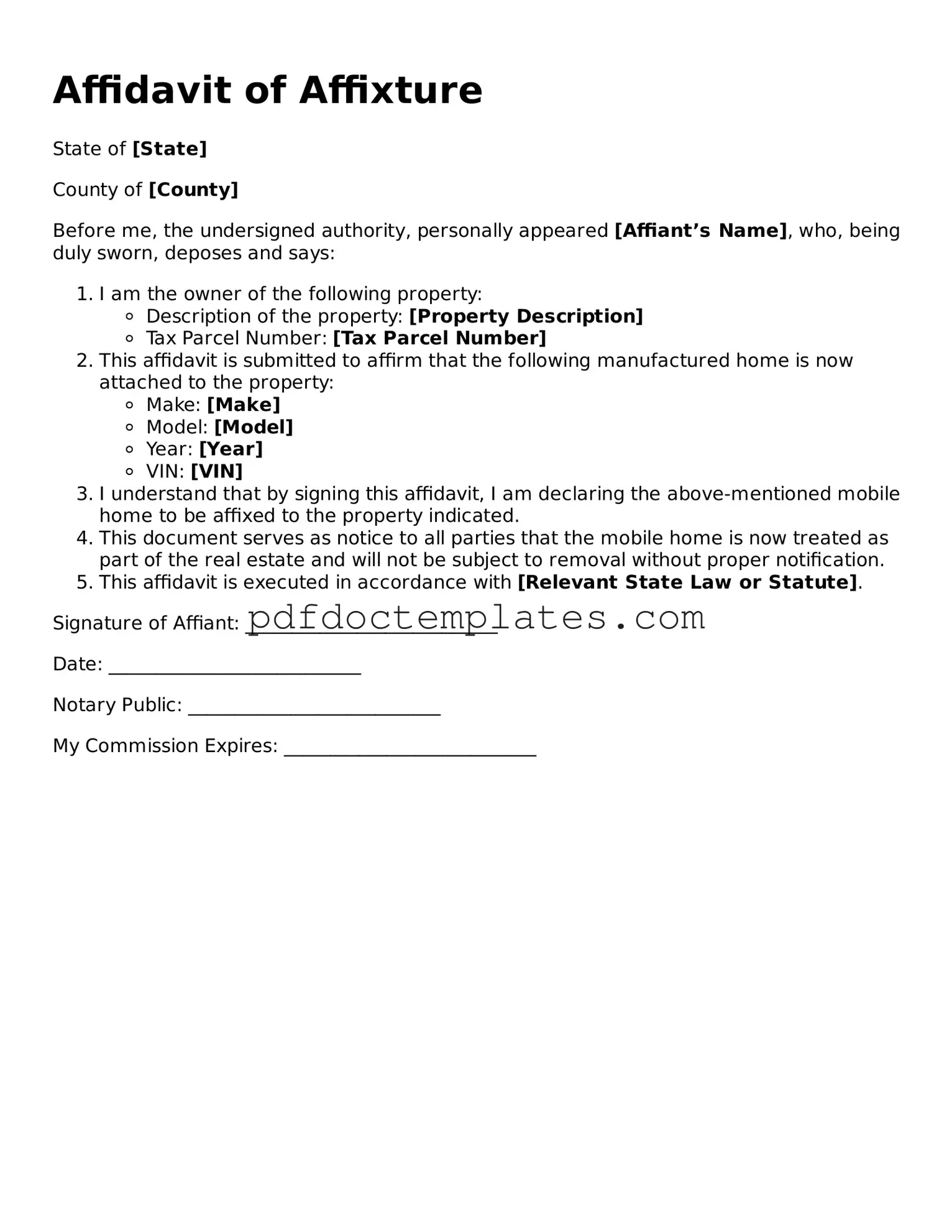Affidavit of Affixture
State of [State]
County of [County]
Before me, the undersigned authority, personally appeared [Affiant’s Name], who, being duly sworn, deposes and says:
- I am the owner of the following property:
- Description of the property: [Property Description]
- Tax Parcel Number: [Tax Parcel Number]
- This affidavit is submitted to affirm that the following manufactured home is now attached to the property:
- Make: [Make]
- Model: [Model]
- Year: [Year]
- VIN: [VIN]
- I understand that by signing this affidavit, I am declaring the above-mentioned mobile home to be affixed to the property indicated.
- This document serves as notice to all parties that the mobile home is now treated as part of the real estate and will not be subject to removal without proper notification.
- This affidavit is executed in accordance with [Relevant State Law or Statute].
Signature of Affiant: ___________________________
Date: ___________________________
Notary Public: ___________________________
My Commission Expires: ___________________________
